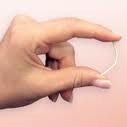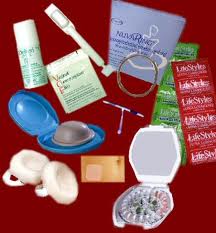 To many, a tax on soda is a no-brainer in advancing the nation’s war on obesity. Advocates point to a number of studies in recent years that conclude that sugary drinks have a lot to do with why Americans are getting fatter. But obese people tend to drink diet sodas, and therefore taxing soft drinks with added sugar or other sweeteners is not a good weapon in combating obesity, according to a new Northwestern University study.
To many, a tax on soda is a no-brainer in advancing the nation’s war on obesity. Advocates point to a number of studies in recent years that conclude that sugary drinks have a lot to do with why Americans are getting fatter. But obese people tend to drink diet sodas, and therefore taxing soft drinks with added sugar or other sweeteners is not a good weapon in combating obesity, according to a new Northwestern University study.
An amendment to Illinois Senate Bill 396 would add a penny an ounce to the cost of most soft drinks with added sugar or sweeteners, including soda, sweet iced tea and coffee drinks. Related to the purpose of the tax, the legislation excludes artificially sweetened and diet sodas.
“After doing the analysis, it really turns out to be the case that obese people like diet soda so much more than regular soda that you can do whatever you want to the price,” said Ketan Patel, a fourth-year doctoral student in economics. “You’re not going to get that much change in obese people’s weight because they already drink diet soda.”
Patel, who recently presented his paper “The Effectiveness of Food Taxes at Affecting Consumption in the Obese: Evaluating Soda Taxes” at a U.S. Department of Agriculture conference on food policy in Washington, D.C., said he initially didn’t know if the diet soda preference was going to be a large factor in evaluating the effectiveness of the soda tax.
“The concern I had was that maybe obese people are less price sensitive,” Patel said. “So if obese people are less price sensitive, then raising the price through a tax will affect their behavior less.”
But that concern became irrelevant since diet drinks are not being considered in the proposed obesity tax.
Beyond its ineffectiveness in reducing obesity, such a tax also would punish consumers that are not overweight or obese, Patel said.
Is there a scenario in which increasing the tax would have an effect on weight? Patel said that could depend on whether people are at a stable weight or whether people are already eating too many calories and therefore their weight will continue to increase. If increasing weights are the status quo, then a tax could prevent people who are currently overweight or normal weight from becoming obese. More research needs to be done on this aspect, however, Patel said.
For this study, Patel used a large data set of sodas price and sales data with individual level data on demographic characteristics and body mass index (BMI) to estimate consumer preferences while allowing for substantial diversity in those preferences. After obtaining estimates of consumer preferences, Patel simulated how a tax would change the choices that consumers make and used the results of the simulation to estimate changes in weight using a weight change model from existing nutrition literature.
In the meantime, however, lawmakers say it does not look likely that the tax will be imposed anytime soon as there is little support for the measure after a recent income tax hike in Illinois.




 It's the talk of Chicago: the new 26 foot tall sculpture of Marilyn Monroe on Pioneer Court on Michigan Avenue. Sculpted by Seward Johnson, known for his massive figures taken from famous paintings and photos, this highly visible piece of art is drawing lots of comments : "Beautiful"--- "it exploits women"--- "she was an icon and a piece of history"---"hey, you can see her panties!" Even some of my favorite columnists are suggesting that if they want to feature important women, why Marilyn?
It's the talk of Chicago: the new 26 foot tall sculpture of Marilyn Monroe on Pioneer Court on Michigan Avenue. Sculpted by Seward Johnson, known for his massive figures taken from famous paintings and photos, this highly visible piece of art is drawing lots of comments : "Beautiful"--- "it exploits women"--- "she was an icon and a piece of history"---"hey, you can see her panties!" Even some of my favorite columnists are suggesting that if they want to feature important women, why Marilyn? I admit, I'm not thrilled that some people (mainly boys and men) are standing under her skirt and taking pictures of her underwear. This is especially puzzling since the original photo was considered a bit racy because it showed her lovely legs---from toe to hip! You really could not see (what it turns out to be) quite modest panties. Go to Oak Street Beach if you want skimpy! Are they looking because they never saw what was under her skirt in the original photos? Are they hoping to be shocked? I doubt anyone today is so repressed that they get some kind of kick out of this view--you just need to turn on the TV or open a magazine if you want to see sexy underwear.
I admit, I'm not thrilled that some people (mainly boys and men) are standing under her skirt and taking pictures of her underwear. This is especially puzzling since the original photo was considered a bit racy because it showed her lovely legs---from toe to hip! You really could not see (what it turns out to be) quite modest panties. Go to Oak Street Beach if you want skimpy! Are they looking because they never saw what was under her skirt in the original photos? Are they hoping to be shocked? I doubt anyone today is so repressed that they get some kind of kick out of this view--you just need to turn on the TV or open a magazine if you want to see sexy underwear. The bottom line: I think the statue is a fun and engaging piece of art that makes me smile(and think of my mother!). Marilyn was a cultural icon who was a celebrity and had a life that ended far too young. As far as those nitwits photographing under her skirt, get a life. Her shoes are more interesting!
The bottom line: I think the statue is a fun and engaging piece of art that makes me smile(and think of my mother!). Marilyn was a cultural icon who was a celebrity and had a life that ended far too young. As far as those nitwits photographing under her skirt, get a life. Her shoes are more interesting! Summer allows more time for children to play outdoors, but when kids (and grown-ups, too) are covered with bug bites after spending time outside, we start to worry about disease spread by ticks, such as Lyme disease, or by mosquitoes, such as West Nile virus. Luckily, there are simple steps to prevent bites and diseases spread by bugs. The US Center for Disease and Prevention Control offers some good suggestions. Click
Summer allows more time for children to play outdoors, but when kids (and grown-ups, too) are covered with bug bites after spending time outside, we start to worry about disease spread by ticks, such as Lyme disease, or by mosquitoes, such as West Nile virus. Luckily, there are simple steps to prevent bites and diseases spread by bugs. The US Center for Disease and Prevention Control offers some good suggestions. Click  Of course! But stereotypes about leadership still pose barriers to women’s advancement.
Of course! But stereotypes about leadership still pose barriers to women’s advancement. In the first study to consider the impact of gender on patient outcomes in major gastrointestinal surgeries, researchers at UC San Diego Health System have found that women are more likely to survive after the procedure than men. The pattern is even more pronounced when comparing women before menopause with men of the same age.
In the first study to consider the impact of gender on patient outcomes in major gastrointestinal surgeries, researchers at UC San Diego Health System have found that women are more likely to survive after the procedure than men. The pattern is even more pronounced when comparing women before menopause with men of the same age. Furthermore, researchers defined additional factors that might contribute to higher survivability rates in women. According to the data, females more frequently had operations performed for elective reasons (58.23 versus 53.57 percent), and were more likely to have their surgeries performed in teaching hospitals (52.01 versus 50.96), which often offer the latest therapies and additional patient care provided by residents.
Furthermore, researchers defined additional factors that might contribute to higher survivability rates in women. According to the data, females more frequently had operations performed for elective reasons (58.23 versus 53.57 percent), and were more likely to have their surgeries performed in teaching hospitals (52.01 versus 50.96), which often offer the latest therapies and additional patient care provided by residents. With the Women’s World Cup in full swing (congrats to the US team for upsetting Brazil in the semifinals!), soccer fans can now rest assured that women are less likely than men to fake on-field injuries, according to a new study by researchers at Wake Forest Baptist Medical Center published in the July issue of the journal Research in Sports Medicine.
With the Women’s World Cup in full swing (congrats to the US team for upsetting Brazil in the semifinals!), soccer fans can now rest assured that women are less likely than men to fake on-field injuries, according to a new study by researchers at Wake Forest Baptist Medical Center published in the July issue of the journal Research in Sports Medicine. Improving maternal health has been a primary goal of the international community led by three United Nations Agencies (UN Populations Fund (UNFPA), the World Bank and the World Health Organization) since they launched the Safe Motherhood Initiative in 1987. Over the years their goals have been reviewed and updated, and in 2007, in recognition to the close links between maternal health and other reproductive conditions, a second target--ensuring universal access to reproductive health services was added to the Millennium Development Goals (MDG).
Improving maternal health has been a primary goal of the international community led by three United Nations Agencies (UN Populations Fund (UNFPA), the World Bank and the World Health Organization) since they launched the Safe Motherhood Initiative in 1987. Over the years their goals have been reviewed and updated, and in 2007, in recognition to the close links between maternal health and other reproductive conditions, a second target--ensuring universal access to reproductive health services was added to the Millennium Development Goals (MDG). A clinical trial to see if a gel containing an active form of
A clinical trial to see if a gel containing an active form of